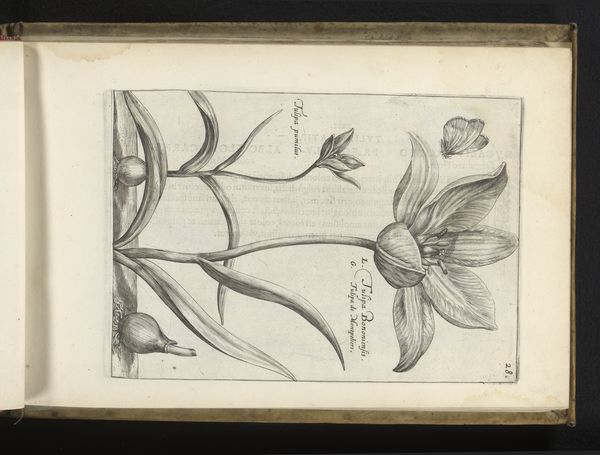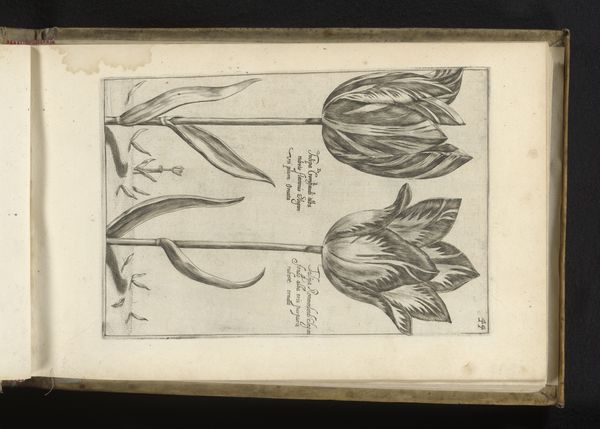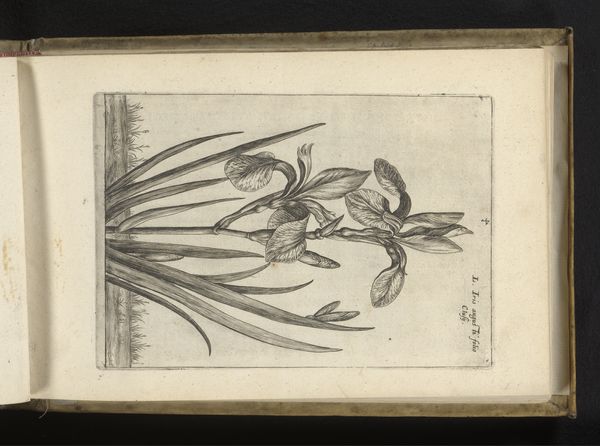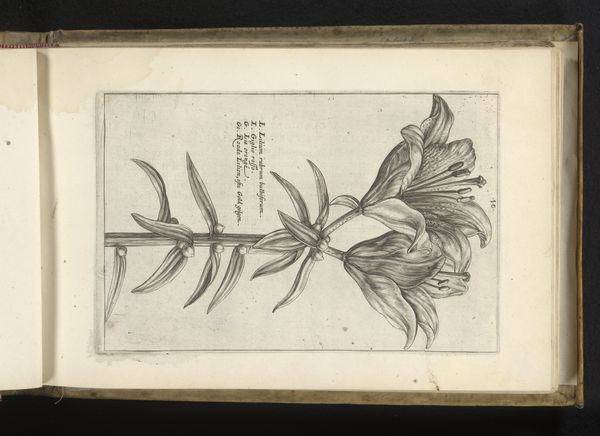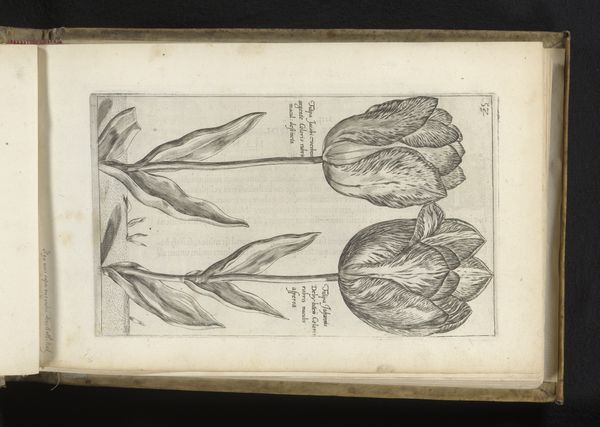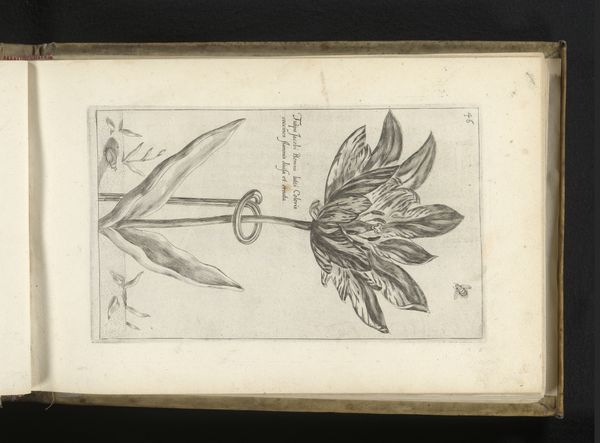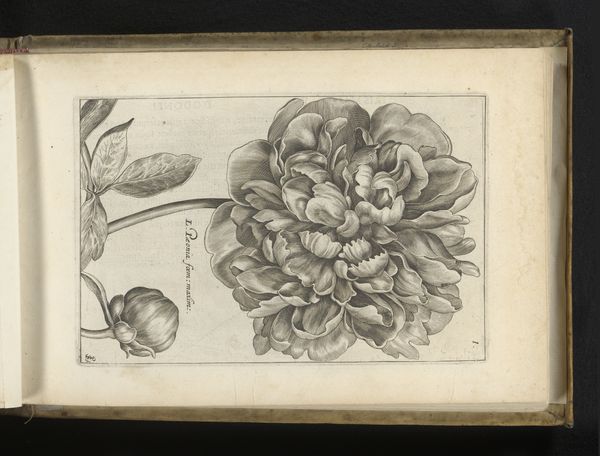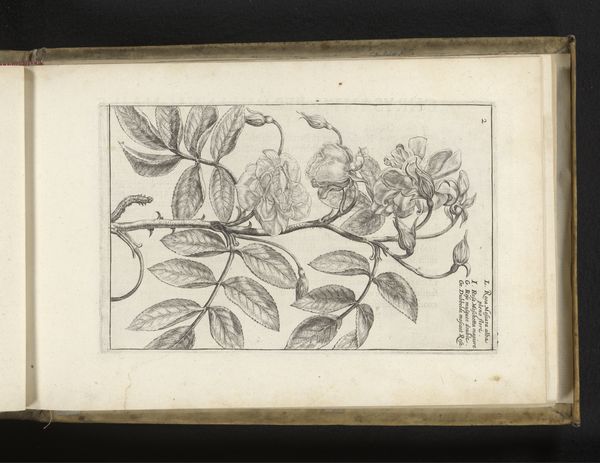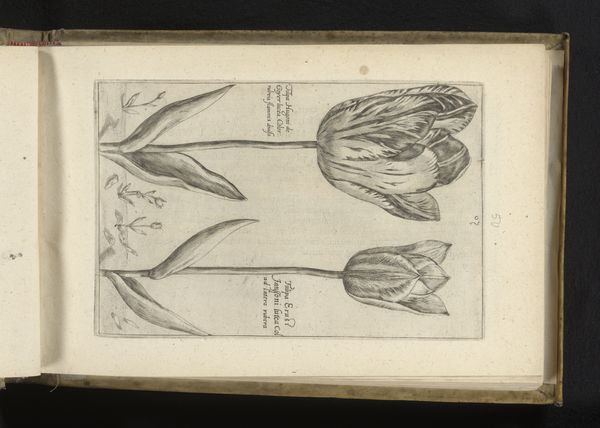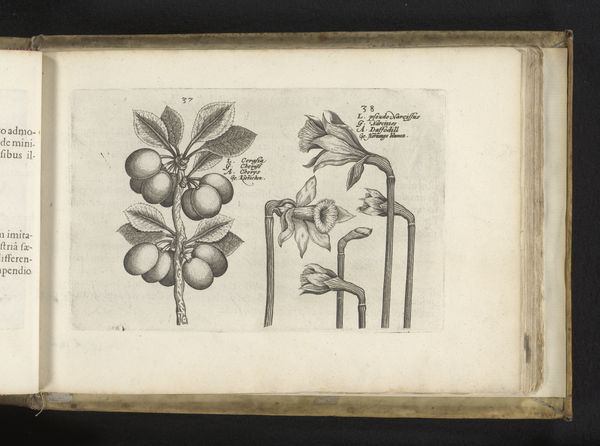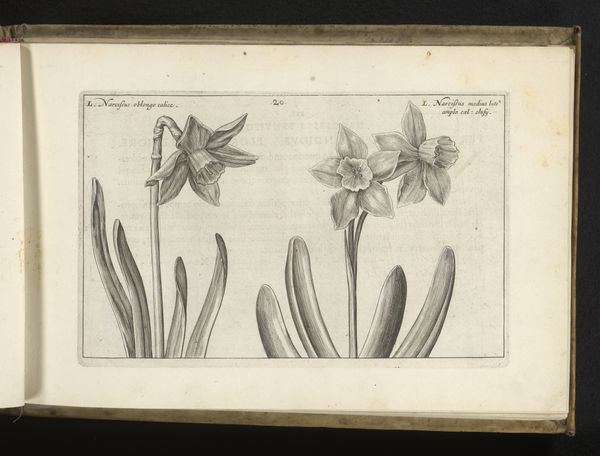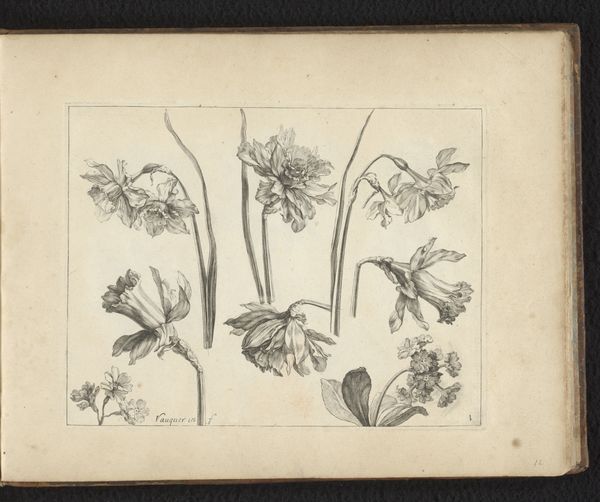
drawing, print, paper, ink, engraving
#
drawing
#
aged paper
#
toned paper
#
ink paper printed
# print
#
sketch book
#
flower
#
paper
#
11_renaissance
#
personal sketchbook
#
ink
#
pen-ink sketch
#
pen and pencil
#
pen work
#
sketchbook drawing
#
sketchbook art
#
engraving
Dimensions: height 227 mm, width 135 mm
Copyright: Rijks Museum: Open Domain
Editor: So, here we have "Tulp," a 1617 print by Crispijn van de Passe II, currently held at the Rijksmuseum. It's rendered in ink on paper. What strikes me is how delicately the artist has rendered the tulip. It looks almost like a study for something bigger, or a botanical illustration. How do you see it? Curator: This piece intrigues me precisely because it isn't just about aesthetic beauty, but about the material realities surrounding tulipmania in 17th-century Holland. Look at the deliberate process of printmaking. The labor involved in creating these images circulated them widely. Was this print meant for a collector’s cabinet, or for dissemination amongst those participating in or observing the tulip market? Editor: That's interesting. I hadn't thought about the "how" and "why" it was made or for whom, only "what." So you’re suggesting the material itself, the print, becomes part of the narrative about tulip speculation? Curator: Precisely! The engraving, the paper, even the ink, are all commodities. Think about it, how does this relatively accessible medium affect the perception and accessibility of something as coveted as a tulip during that time? The print becomes both a representation and a component of that economic frenzy. The creation and consumption of such images mirrored, and perhaps even fuelled, the market. What kind of exchange, of value, was happening here? Editor: That makes so much sense! The print democratized the image of the tulip. Curator: Exactly. It challenges the very notion of the "unique" artwork versus the readily reproduced image. Editor: I hadn't considered the economic aspect before. Thinking about art in terms of material processes and social context offers a richer understanding. Thanks! Curator: My pleasure! Looking closely at these details is where the true story of the artwork lies.
Comments
No comments
Be the first to comment and join the conversation on the ultimate creative platform.
